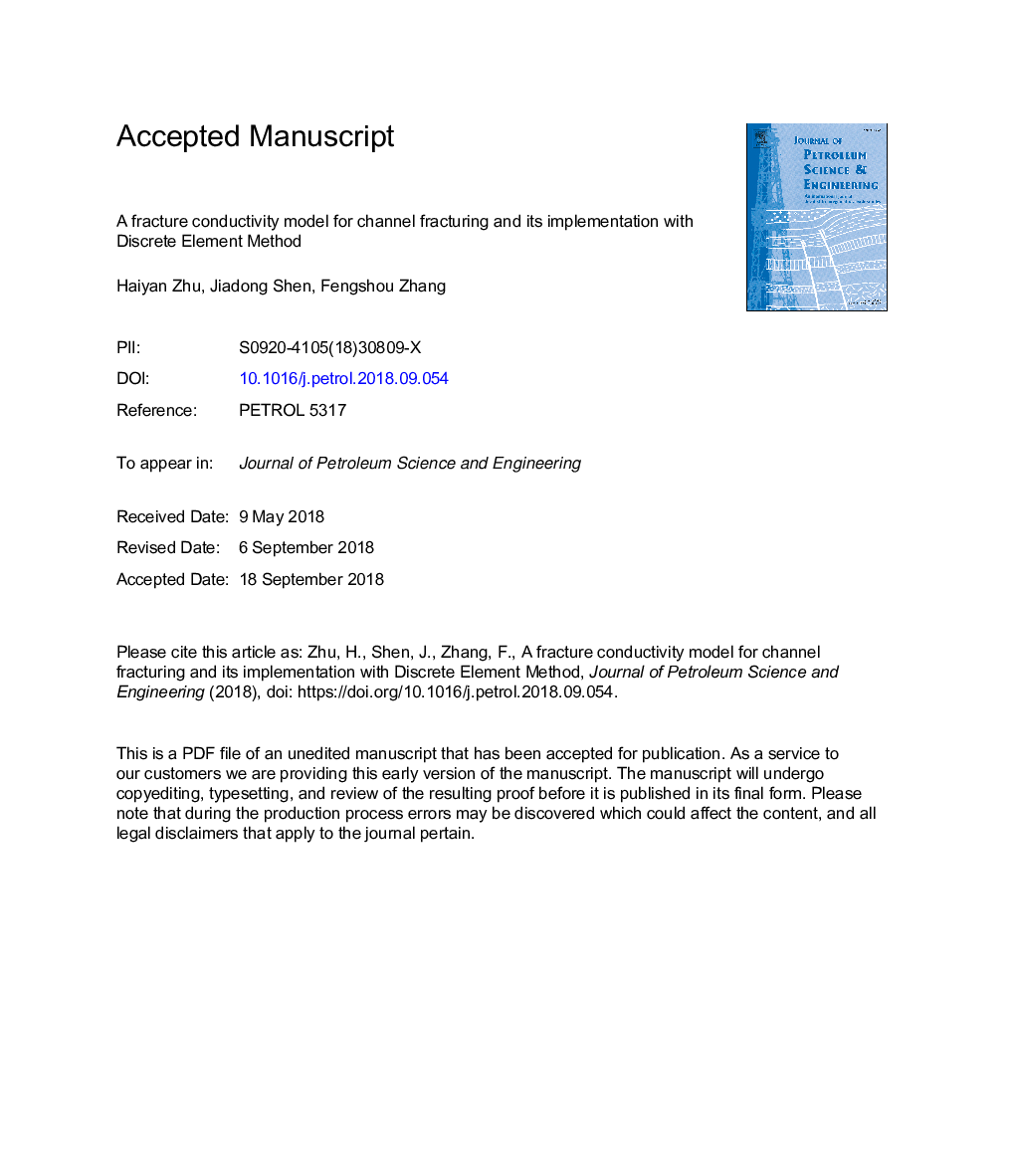| Article ID | Journal | Published Year | Pages | File Type |
|---|---|---|---|---|
| 11026380 | Journal of Petroleum Science and Engineering | 2019 | 30 Pages |
Abstract
This paper introduces a new method to predict conductivity in channel fracturing by implementing analytical solution in Discrete Element Method (DEM). First, an analytical model for channel fracturing conductivity is proposed. Then, a DEM model calibrated by using experimental results is set up to investigate the deformation of proppant pillar. Finally, the analytical model of fracture conductivity is implemented in the DEM model to predict conductivity during fracture closing. Parametric analyses are carried out to understand the effects of four factors: proppant size combination, concentration, time ratio Ï and elastic modulus to stress ratio λ. Conductivity generally decreases during fracture closing and increases with the increasing proppant size and proppant concentration. The ratio of the pulsing time of proppant laden fluid to the pulsing time of the clean fluid is the key parameter for the field operation. A large time ratio could enhance the pillar stability though it may lead to the damage of fracture conductivity. For given rock modulus, closing stress and proppant size, the optimal range of time ratio can be given as a guidance for field operation. The field application of channel fracturing in the Shengli Oilfield proves that the optimized range of time ratio Ï based on the proposed theoretical model is valid. The porosity of proppant pillar first decreases due to compression and then increases during fracture closing period because of the breakdown of the proppant pillar and the resulted particle movement outward. This paper gives insights for understanding the channel fracture conductivity and provides a practical tool for the optimization of channel fracturing design in the field.
Related Topics
Physical Sciences and Engineering
Earth and Planetary Sciences
Economic Geology
Authors
Haiyan Zhu, Jiadong Shen, Fengshou Zhang,
